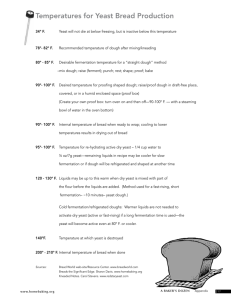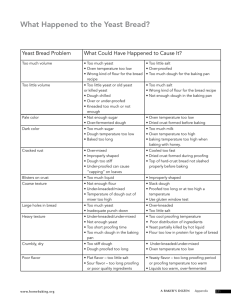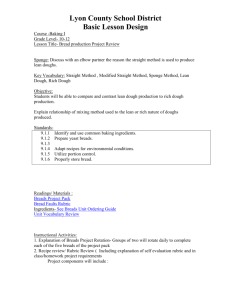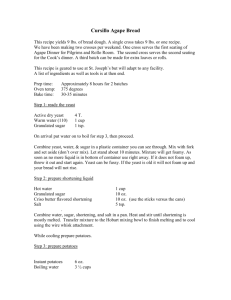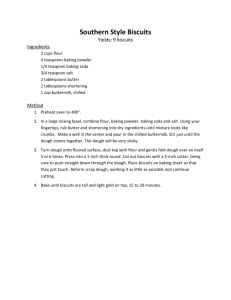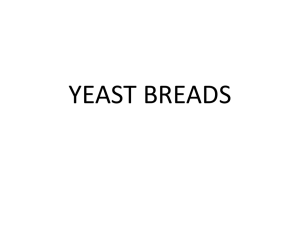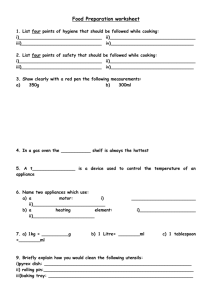Chap 4 Understanding Yeast Doughs
advertisement
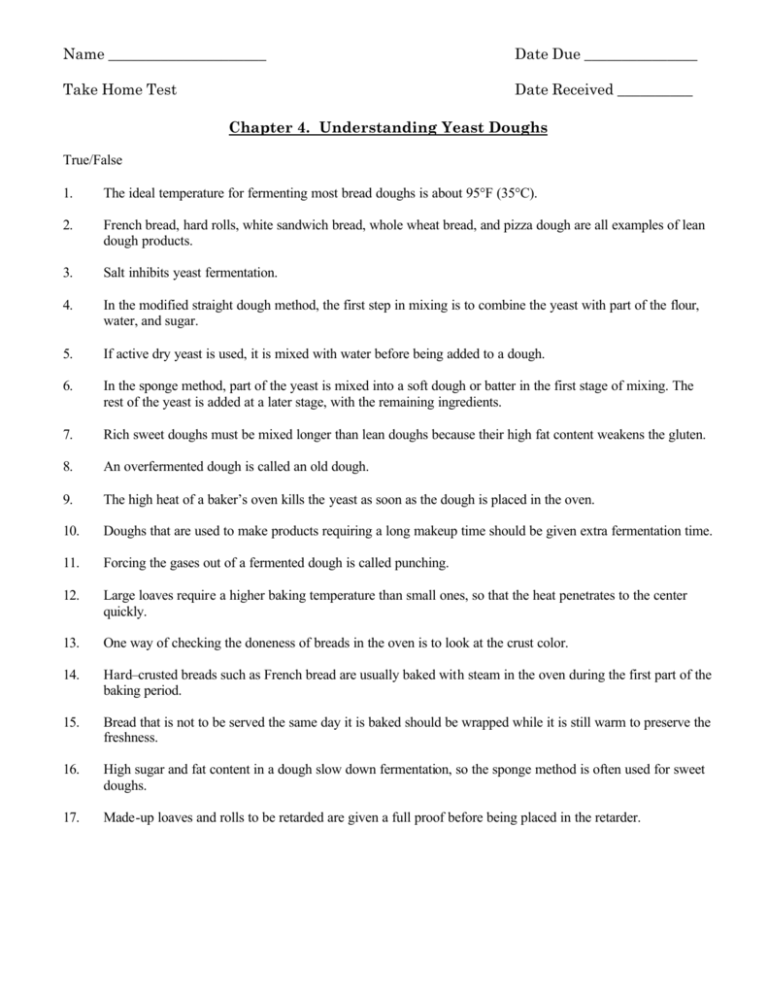
Name _____________________ Date Due _______________ Take Home Test Date Received __________ Chapter 4. Understanding Yeast Doughs True/False 1. The ideal temperature for fermenting most bread doughs is about 95°F (35°C). 2. French bread, hard rolls, white sandwich bread, whole wheat bread, and pizza dough are all examples of lean dough products. 3. Salt inhibits yeast fermentation. 4. In the modified straight dough method, the first step in mixing is to combine the yeast with part of the flour, water, and sugar. 5. If active dry yeast is used, it is mixed with water before being added to a dough. 6. In the sponge method, part of the yeast is mixed into a soft dough or batter in the first stage of mixing. The rest of the yeast is added at a later stage, with the remaining ingredients. 7. Rich sweet doughs must be mixed longer than lean doughs because their high fat content weakens the gluten. 8. An overfermented dough is called an old dough. 9. The high heat of a baker’s oven kills the yeast as soon as the dough is placed in the oven. 10. Doughs that are used to make products requiring a long makeup time should be given extra fermentation time. 11. Forcing the gases out of a fermented dough is called punching. 12. Large loaves require a higher baking temperature than small ones, so that the heat penetrates to the center quickly. 13. One way of checking the doneness of breads in the oven is to look at the crust color. 14. Hard–crusted breads such as French bread are usually baked with steam in the oven during the first part of the baking period. 15. Bread that is not to be served the same day it is baked should be wrapped while it is still warm to preserve the freshness. 16. High sugar and fat content in a dough slow down fermentation, so the sponge method is often used for sweet doughs. 17. Made-up loaves and rolls to be retarded are given a full proof before being placed in the retarder. 18. When dissolving yeast, the water temperature should be A. 32°F (0°C). B. room temperature. C. 100°F (38°C). D. 140°F (60°C). 19. Yeast action in the fermentation process continues until the dough A. is double in size. B. springs back when touched. C. holds a dent when touched. D. reaches 140°F (60°C). 20. Punching is a method of deflating the dough that A. expels carbon dioxide and relaxes the gluten. B. redistributes the yeast for further growth. C. equalizes the temperature throughout the dough. D. All of the above. 21. The scaling of bread dough should be done quickly to avoid A. drying out. B. overfermenting. C. splitting during baking. D. creating air holes. 22. The rapid rising of a yeast dough when it begins baking is known as A. oven spring. B. proofing. C. coagulation of the proteins. D. benching. 23. To create a thin, crisp crust for French bread, the dough is washed with A. egg. B. milk. C. starch paste. D. water. 24. Which yeast breads use steam to retard the formation of the crust during baking? A. French bread B. Brioche C. Croissants D. Danish pastry 25. In this dough-making process, the water, yeast, and flour are allowed to ferment before the other ingredients are mixed in. A. Straight dough method B. Modified straight dough method C. Sponge method D. No-time method 26. In order to get a mixed dough of the right temperature for fermentation, the easiest variable to regulate is A. shop temperature. B. flour temperature. C. fat temperature. D. water temperature. 27. Streaking in a finished yeast bread is often caused by A. insufficient steam during baking. B. overmixing. C. overproofing. D. too much flour used for dusting.
